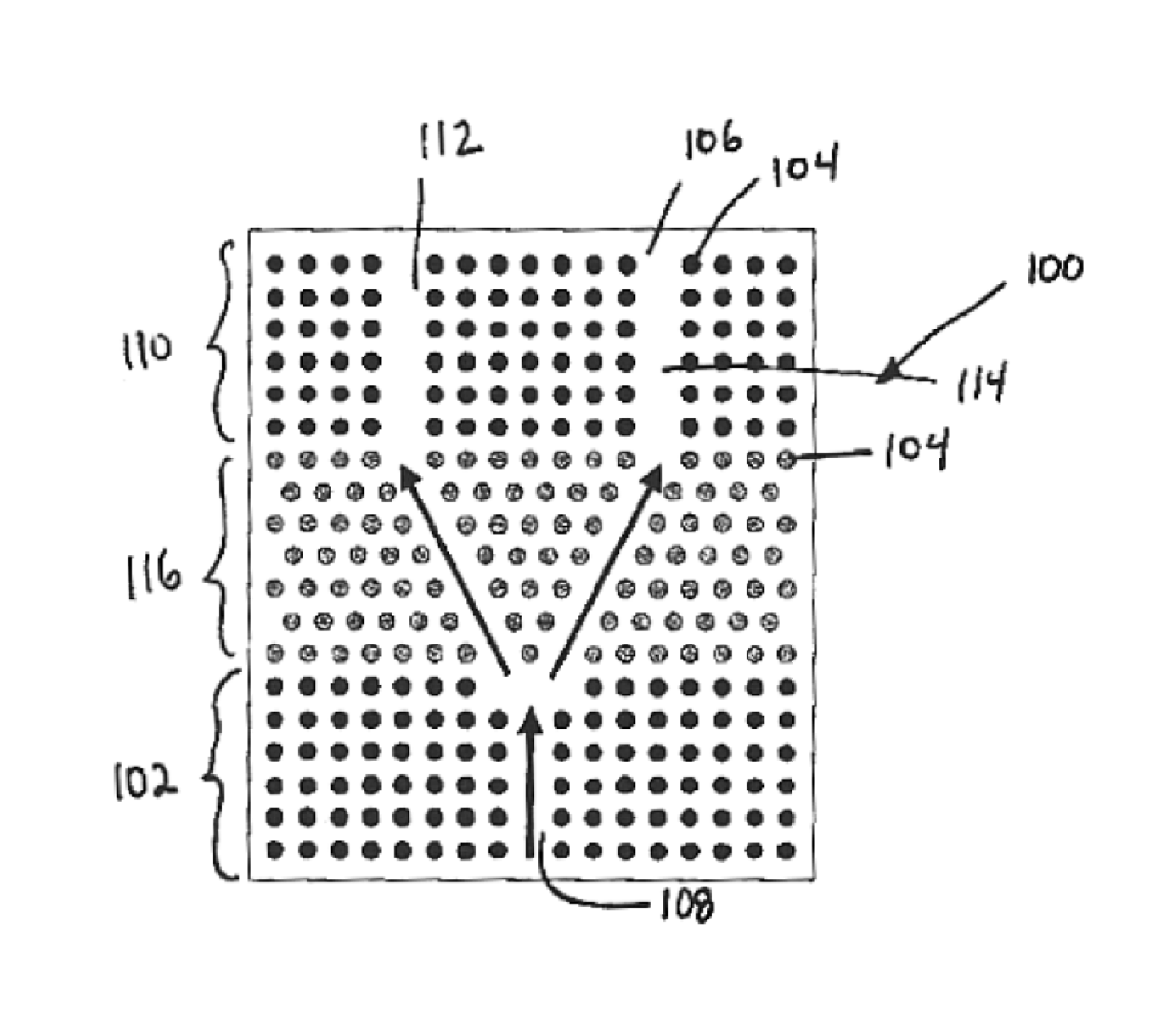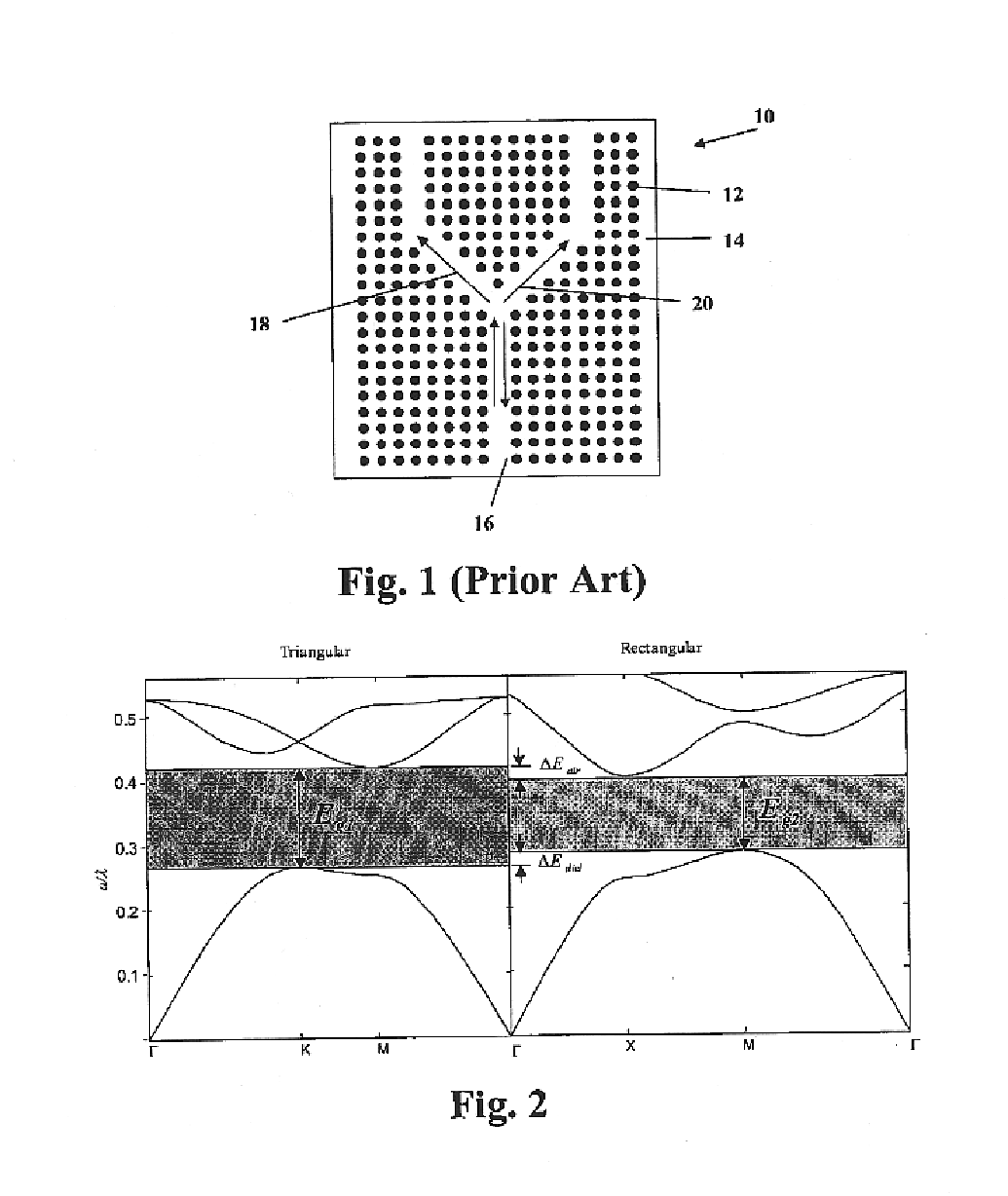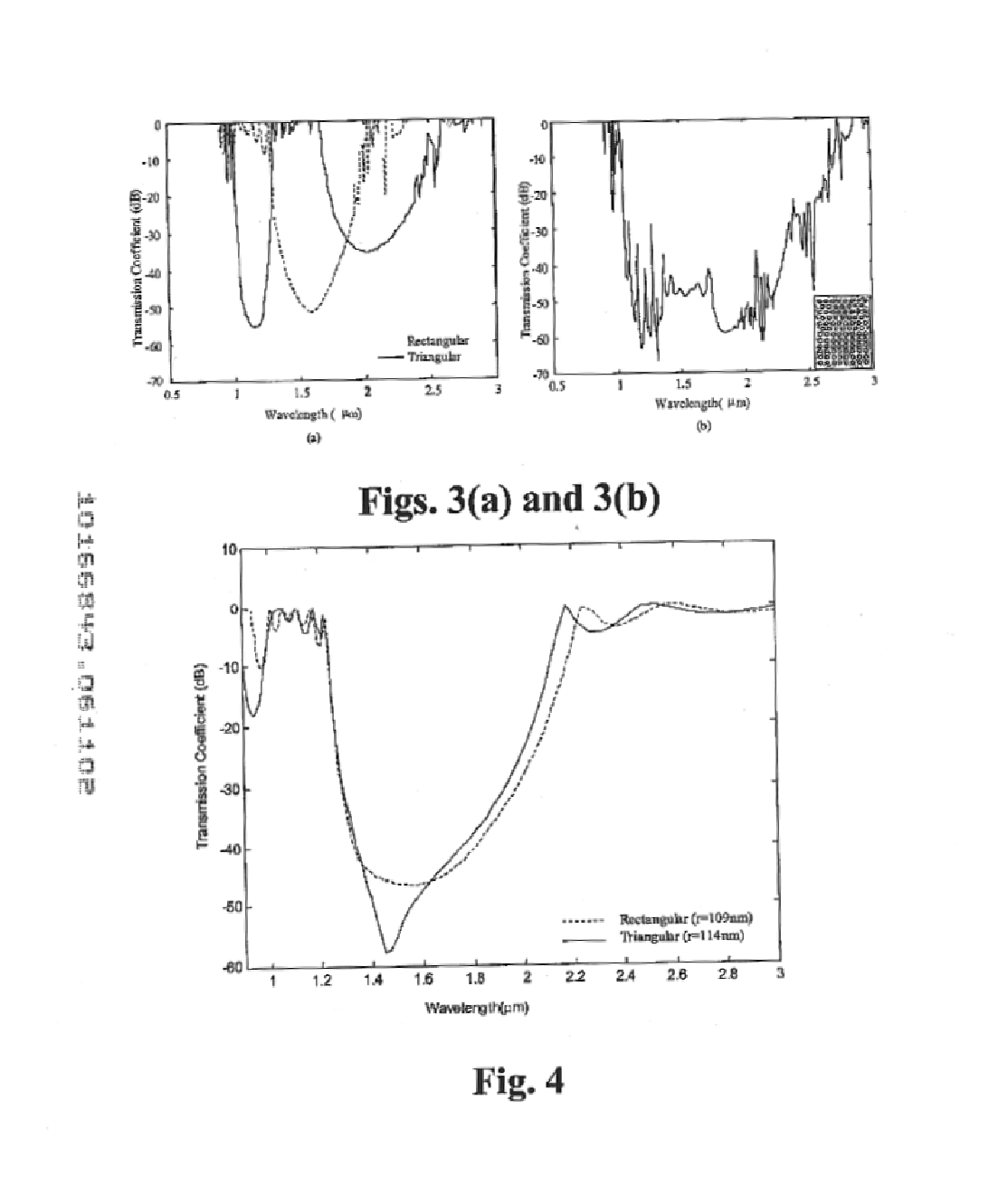Hetero-structure photonic bandgap materials
a photonic bandgap and heterostructure technology, applied in the field of photonic bandgap materials, can solve the problems of single crystalline structure, unistructure, and inability to optimize the performance of a photonic integrated circuit (pic) in a single, and achieve the effects of improving throughput efficiency, back reflection, and reducing the size of the bandgap
- Summary
- Abstract
- Description
- Claims
- Application Information
AI Technical Summary
Benefits of technology
Problems solved by technology
Method used
Image
Examples
Embodiment Construction
Reference will now be made in detail to the present preferred embodiment of the invention, an example of which is illustrated in the accompanying drawings. Wherever possible, the same reference numbers will be used throughout the drawings to refer to the same or like parts.
As used herein, the expression "optically communicates" refers to any connection, coupling, link or the like by which optical signals carried by one optical system element are imparted to the communicating element.
A. Localization of Light in Photonic Crystals
The physical phenomena that clearly describes the operation of a photonic crystal is the localization of light, which is achieved from the scattering and interference produced by a coherent wave in a periodic structure. In this case a photon located in a lossless dielectric media provides an ideal realization of a single excited state in a static medium at room temperature. To describe this phenomenon, Maxwell's equations are cast into a form similar to Schrod...
PUM
 Login to View More
Login to View More Abstract
Description
Claims
Application Information
 Login to View More
Login to View More - R&D
- Intellectual Property
- Life Sciences
- Materials
- Tech Scout
- Unparalleled Data Quality
- Higher Quality Content
- 60% Fewer Hallucinations
Browse by: Latest US Patents, China's latest patents, Technical Efficacy Thesaurus, Application Domain, Technology Topic, Popular Technical Reports.
© 2025 PatSnap. All rights reserved.Legal|Privacy policy|Modern Slavery Act Transparency Statement|Sitemap|About US| Contact US: help@patsnap.com



